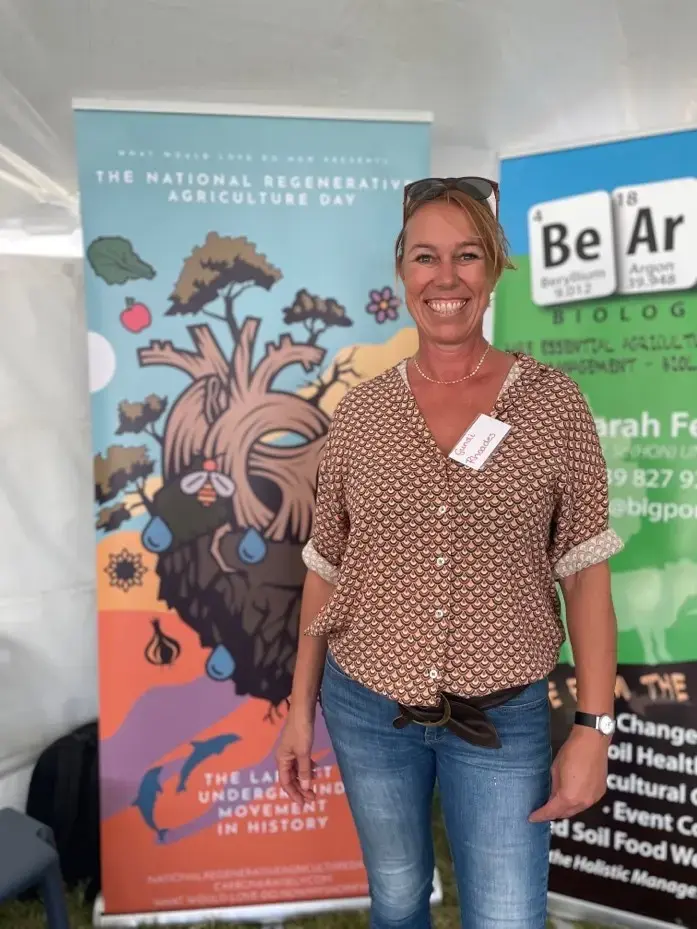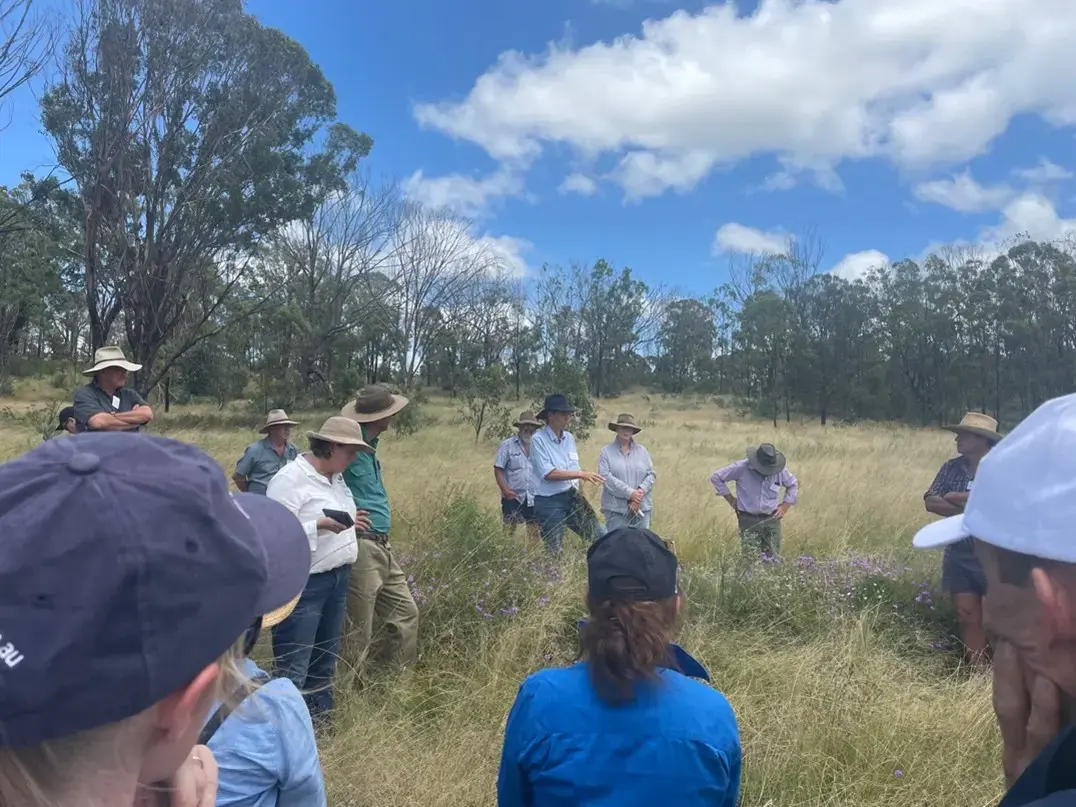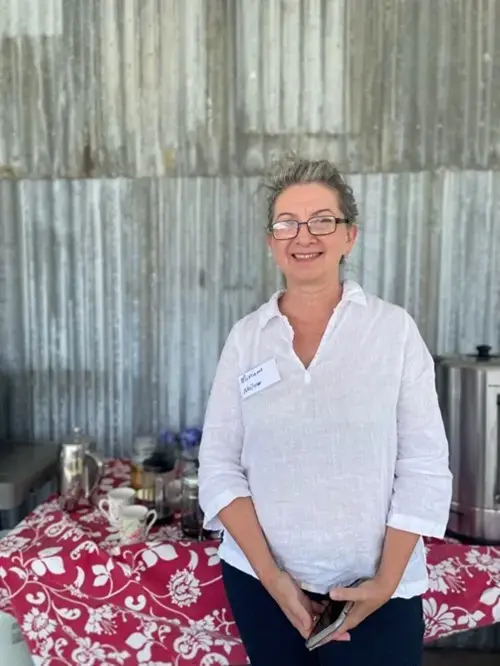Did you know that farmers have hijacked Valentine’s Day?
#heartyourfarmer
Last month, National Regenerative Agriculture Day events were held around the country. Soils for Life attended one event held in the Darling Downs of south-east Queensland at Picot’s Farm.
Like most of these events, this was a community affair. It was organised by Tanya Jobling (coordinator of Condamine Headwaters Landcare), Sarah Fea (a regional regenerative agroecologist of BEAR Biologics), and Helen Lewis (a certified Holistic Management trainer), as well as many regenerative farming families, all living in the Darling Downs. The event was also supported by Carbon 8, a charity supporting farmers to transition towards regenerative practices.
Taking a holistic approach, the day was framed around the themes of Soil, People, Profit, and Product and Marketing. A diverse group of presenters talked about a range of topics, from soil health to financial considerations and marketing avenues for regenerative products.
Soil
For insights into Soil, we heard from Dr Gundula Rhoades, a local veterinarian. Seeing the impacts of vitamin deficiencies on stock and farm animals, Dr Rhoades has been researching the connections between soil biology and chemistry, and plant, animal and human health.
Her key message was, ‘when the soils die, so does everything else’. Dr Rhoades explained that all vitamins (bar vitamin C) are made by microbes in the soil, as are alkaloids, essential amino acids and other phytochemicals.
Gundula continued,
‘When we kill soil microbes, we essentially stop the nutrient production for our food, and food becomes nutrient-empty. As glyphosate, the most used herbicide in the world, kills the bacteria and fungi in the ground, our bodies are starved of vital nutrients. The modern disease epidemic is largely to be attributed to the lack of vital nutrients. Farmers can address climate change, drought, biodiversity, and wellbeing through growing good, natural food.’

Dr Gundula Rhoades sharing links between soil, human and planetary health.
Dr Neil Wilson, a microbial ecologist, provided insights into restoring microbiomes. ‘There are more microbes on Earth than there are stars in the universe’. He continued to explain that these amazing micro-organisms form the basis of our health and the health of the biosphere. These tiny “workers” do amazing and necessary things in our soil. Without them, agriculture becomes impossible.
To help our soils function better we can add more “food” for the existing microbes (carbon compounds, like those found in compost), or “housing” for those microbes (such as bio-char). Adding food and housing strengthens the underground community of microbes, particularly against harmful fungi, bacteria and pathogens.
Neil said that sometimes, additional microbe workers, can even be added. However, he cautioned that this can be challenging at times, as new microbes might enter into competition with the existing community. As always, he reminded the audience, it is about getting to know your soils through monitoring, observation and considered experimentation, to work out what might be most helpful for your land.
We also took a walking tour of Picot’s Farm to see and learn more about the swales that they had added to their landscape, in partnership with the local Condamine Headwaters Landcare group, based on the theories of Natural Sequence Farming. The purpose of building these banks, which follow the contours of the land, is to redistribute water from gullies towards ridges. This redistribution essentially takes the energy out of the water so that it can slowly be absorb by the land, which can also result in decreased erosion.
There was plenty of interest in this technique, and Condamine Headwaters Landcare has now purchased and lends out a laser level to allow more Landcare members to undertake swale construction. The laser helps construct swales along a level contour. This type of sharing of resources is an important way to support the uptake of restorative practices across many farms.

Tanya Jobling of Condamine Headwaters Landcare sharing the story of ‘slowing the flow’ of water on the Picot’s Farm.
People
During the break, many people were discussing the benefit of regenerative farmers banding together to create a sense of energy and excitement in the surrounding community. How can more regenerative farmers create a cooperative? How can farmers exchange resources and supply one another? (For example, Echo Valley Farm – introduced below – buys their weaners from Picot’s Farm.) How can regenerative farmers create food festivals in their region?
Many of the farmers in the Southern Downs and Granite Belt area are easily found on a food trail map. This collective marketing lures foodies into a weekend away, while educating customers on the importance of – and power in – sourcing regenerative food.
After the short break, Helen Lewis led a session on all the “tools” in the “toolbox” that farmers have to improve their own practices and achieve their farm vision. In addition to being the owner of Picot’s Farm, Helen is also an educator and trained Savory Institute facilitator in Holistic Management.
Helen led us through a series of decision-making questions, designed to help landowners and farmers to check they are using the tools in the best possible way to meet their property goals. These questions were on technology (e.g. Does it kill soil biology? Does it solve the root cause of the problem?), time (e.g. How are we using hours in the day? Are we taking the time off we need to be able to physically, mentally, emotionally restore ourselves?) and living organisms, both large and small (e.g. Do we need to use inputs? If so, how can we make them living? How can they help us to manage livestock?).
Profit
Profit is, of course, essential to any enterprise. Regenerative farming must be financially viable, but as Ted Callahan explained, we need to look at profit over the long-term. He suggests that farmers should have a plan ready to make wise decisions around profit margins. This plan should support farmers’ holistic vision for their farm, which can include ecological, social and financial considerations.
Ted shared examples of how to make decisions that maintain the financial resilience of a property. For example, for him, it is important to consider how each decision will affect his cash flow. He also explained that he is willing to decrease production through decreasing chemical inputs. These decreased inputs obviously decrease his costs significantly (especially with the rapidly increasing prices of chemical inputs), yet he still achieves gross margins on a smaller volume of production.
Product & Marketing
One of the keynote speakers, Cindy O’Meara, of Changing Habits, spoke about the essential links between food production and food health, and her mission to help regenerative farmers by influencing how food is produced, classified and marketed.
The final discussion of the day was a panel of farmers including, Kym Sullivan (Kym’s Homegrown Organics), Rowan Berecry (Good Rich Fruit Company), and Juanita Breen (Echo Valley Farms). These farmers have all sought to value-add to their enterprises and market in innovative ways, achieving financial success.
For example, Echo Valley Farms spoke about their direct marketing approach, which has three prongs: 1) running a Community Supported Agriculture subscription; 2) selling at farmers markets; and 3) selling directly through their website. They also have an indirect approach to marketing, supplying wholesale customers, such as Sovereign Foods. Sovereign Foods sources only from regenerative farmers, and help Echo Valley Farms reach a broader market. Echo Valley Farms are also the only egg operation accredited under the Australian Sustainable Products (ASP) certified sustainable produce scheme, providing them with a unique selling point.

Miriam Neilson of ASP
Miriam Neilson, executive director of ASP Certified, shared that ASP Certified aims to provide farmers with the traceability and rigour of an Australian Competition and Consumer Commission (ACCC) recognised certification. This can help farmers achieve a market premium, plus it can give them the peace of mind that comes with clean residue tests.
Speaking with market gardener Samantha Palmer over delicious local nibbles after the event, the conversation around marketing continued. Samantha is part of a unique collaboration with twelve other local farmers who contribute produce to a shared banner of ‘Granite Belt Organic Growers’. Each weekend one of three families take turns bringing their produce from these twelve farmers to the Northey Street Organic Markets in Windsor. The family doing the selling that weekend gets a commission of all sales. This means the Palmer family gets several weekends off each month, and when it is their turn to get up at midnight and drive into Brisbane, they are rewarded with extra income that week.
Would you like to get started on your soil health journey?
To learn more and take the next steps, Soils for Life offers case studies and podcasts that include more farmer stories, useful tips, latest research and more. You can search by topic and location here.




